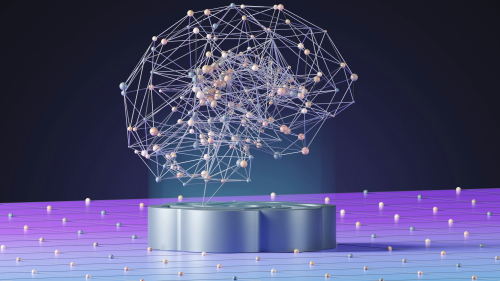In 2022, global IP traffic reached 396 exabytes per month, nearly triple the volume from 2017. In response, next-generation networks have had to transform the way we interact with each other and the world around us. The rapid evolution of technology means traditional network architecture can’t meet modern communication demands.
The concept of next-generation networking involves a paradigm shift. It moves from the conventional network infrastructure to a more agile, dynamic, and scalable system. We now see a need for:
- Enhanced security
- Improved performance
- Greater flexibility
Let’s dive in deeper.
Key Takeaways
- When you leverage SDN, NFV, AI, and cloud computing, your modern networks can adapt in real-time, respond to threats more intelligently, and deliver services more efficiently.
- These features enable network administrators to deploy and manage infrastructure quickly, which will ensure consistent configurations and reduce operational overhead.
- Open standards will ensure that diverse systems and devices can seamlessly communicate, which will promote collaboration across your vendors and accelerate digital transformation.
Core Features: Automation, Virtualization, Software-defined Networking
The core features of next-generation networking center around automation, virtualization, and software-defined networking. These technologies enable the creation of more robust and resilient networks. They’re capable of adapting to the demands of:
- Cloud computing
- The Internet of Things (IoT)
- Other emerging technologies
Automation, for instance, reduces manual errors and improves efficiency by automating routine tasks. At the same time, virtualization enhances resource utilization and scalability. Software-defined networking, in contrast, decouples the control plane from the data plane. This allows for more agile network management and greater flexibility.
Furthermore, next-generation networking incorporates advanced security measures to protect against cyber threats. Features that are essential to safeguard data and maintain network integrity include:
- Intrusion detection and prevention systems (IDPS)
- Firewalls
- Secure communication protocols
These measures are particularly crucial in the age of increasing digital vulnerabilities. This is where sensitive information is at risk of compromise.
Next-generation networking represents a significant leap forward. This reflects the development of modern communication infrastructure. It’s critical to incorporate:
- Advanced technologies
- Robust security measures
- Enhanced performance capabilities
This next-generation networking ensures that our digital interactions remain secure, efficient, and effective.
The Evolution of Next-Generation Networking
The way we communicate and interact has evolved. The Internet has become an integral part of our daily lives. And the systems that facilitate this communication are evolving. That way, they can meet the demands of a rapidly changing world.
The concept of next-generation networking has emerged in response to modern communication needs. It offers a range of features designed to enhance:
- connectivity
- security
- overall efficiency
The term “next-generation networking” refers to a suite of technologies and methodologies. They’re aimed at improving the performance, security, and scalability of existing networks. This approach builds upon the foundation established by traditional networking technologies. These incorporate the latest advancements in:
- Cyber security
- Cloud computing
- Artificial intelligence
These create a more robust and intelligent network architecture.
Key Features of Next-Generation Networking
1. Software-Defined Networking (SDN)
Software-defined networking (SDN) is a fundamental aspect of next-generation networking. SDN decouples the control plane from the data plane. This allows for precise control and manipulation of network traffic.
This enables administrators to optimize network performance and make real-time adjustments. These will improve efficiency and security. SDN also supports the development of innovative services. These include network function virtualization (NFV). It virtualizes network functions to enhance flexibility and reduce costs.
2. Network Function Virtualization (NFV)
Network function virtualization (NFV) is a critical component of next-generation networking. NFV allows network functions, such as firewalls and load balancers, to be virtualized and run on commodity hardware.
This virtualization enhances flexibility and reduces the need for specialized hardware. This makes it easier to deploy and manage new services. NFV also supports the creation of virtualized network functions (VNFs). These can be easily scaled and updated as needed.
3. Cloud Computing
The integration of cloud computing into next-generation networking allows for the deployment of applications and services in a scalable and cost-effective manner. Cloud computing enables the delivery of services over the internet. This eliminates the need for physical infrastructure. It reduces the complexity of network management. This approach supports the development of cloud-native applications. It can take advantage of the elasticity and scalability offered by cloud environments.
4. Artificial Intelligence and Machine Learning
Artificial intelligence (AI) and machine learning (ML) are increasingly being integrated into next-generation networking. This is to enhance its capabilities. AI and ML algorithms can:
- Analyze network traffic patterns
- Identify anomalies
- Take proactive measures
These are to protect the network from threats. The technologies also enable predictive maintenance. This allows network administrators to anticipate and address potential issues before they occur.
5. Security and Threat Mitigation
Security is a core concern in next-generation networking. Various features mitigate threats and ensure the integrity of network traffic. Advanced encryption techniques like end-to-end encryption are used to protect data in transit. Additionally, AI-powered intrusion detection and prevention systems (IDPS) can detect and respond to potential threats in real-time. This enhances the overall security posture of the network.
6. Orchestration and Automation
Orchestration and automation are essential for managing the complexity of next-generation networks. These capabilities allow for the automated deployment, configuration, and management of network resources. Subsequently, this reduces the administrative burden and improves overall efficiency. Automation also enables the rapid provisioning of new services. This is critical in today’s dynamic business environment.
7. Interoperability and Standardization
The success of next-generation networking relies heavily on interoperability and standardization. This ensures that different devices and systems can communicate. This is regardless of their manufacturer or architecture. Industry standards play a crucial role in promoting interoperability. It also fosters innovation in the field of networking. These include the Open Networking Foundation (ONF) and the Open Compute Project (OCP).
The Impact of Next-Generation Networking
The adoption of next-generation networking has far-reaching implications for industries and individuals alike. The enhanced capabilities and features of these networks:
- Enable new business models
- Improve customer experiences
- Enhance overall productivity
In the context of cybersecurity, next-generation networking provides a robust defense against emerging threats. This ensures that networks are secure and resilient.
Future Developments
The future of next-generation networking promises further advancements in the areas of:
- AI
- 5G
- Edge computing
These technologies continue to transform the way we interact with each other and the world. The demand for faster and more secure communication continues to grow. And the development of next-generation networking will remain a critical focus for industry leaders and innovators.
A New Era of Connectivity
Next-generation networking represents a significant step forward in the evolution of modern communication. These networks leverage the latest advancements in:
- Software-defined networking
- Cloud computing
- AI
- Security
In doing so, they will revolutionize the way we live and work. The future of next-generation networking is bright. And its impact will be felt across all aspects of our lives.
Next-generation networking will play a central role in shaping our digital future. We need cutting-edge technologies and the continuous exploration of innovative solutions. These will ensure that our networks remain:
- Agile
- Secure
- Capable of supporting the ever-growing demands of modern communication
You may also be interested in: Future-Proof IT: 6 Cloud Market Forces to Boost Strategies
Eliminate DevOps hiring needs. Deploy secure, compliant infrastructure in days, not months. Accelerate your launch and growth by avoiding tedious infrastructure tasks. Join thousands of Dev teams getting their time back. Leverage DuploCloud DevOps Automation Platform. We’re backed by infrastructure experts to automate and manage DevOps tasks. Drive savings and faster time-to-market with a 30-minute live demo
FAQs
What is the main difference between traditional and next-generation networks?
Traditional networks rely on static hardware-based configurations. Next-generation networks use virtualization, automation, and software-defined components. These create a dynamic, scalable, and secure infrastructure.
Why is software-defined networking (SDN) essential for next-gen networks?
SDN separates the control and data planes. This gives administrators centralized control over traffic flows. It simplifies management and enhances flexibility and scalability as well as security.
How does artificial intelligence improve network security?
AI-powered tools can perform many functions. This includes the ability to:
- Detect anomalies
- Predict failures
- Respond to threats.
It significantly improves the speed and accuracy of network protection and maintenance.
Can next-generation networks support legacy infrastructure?
Yes. Many next-gen solutions are designed to interoperate with legacy systems. This allows organizations to modernize incrementally. And they do it without the need to overhaul their entire infrastructure all at once.
.



